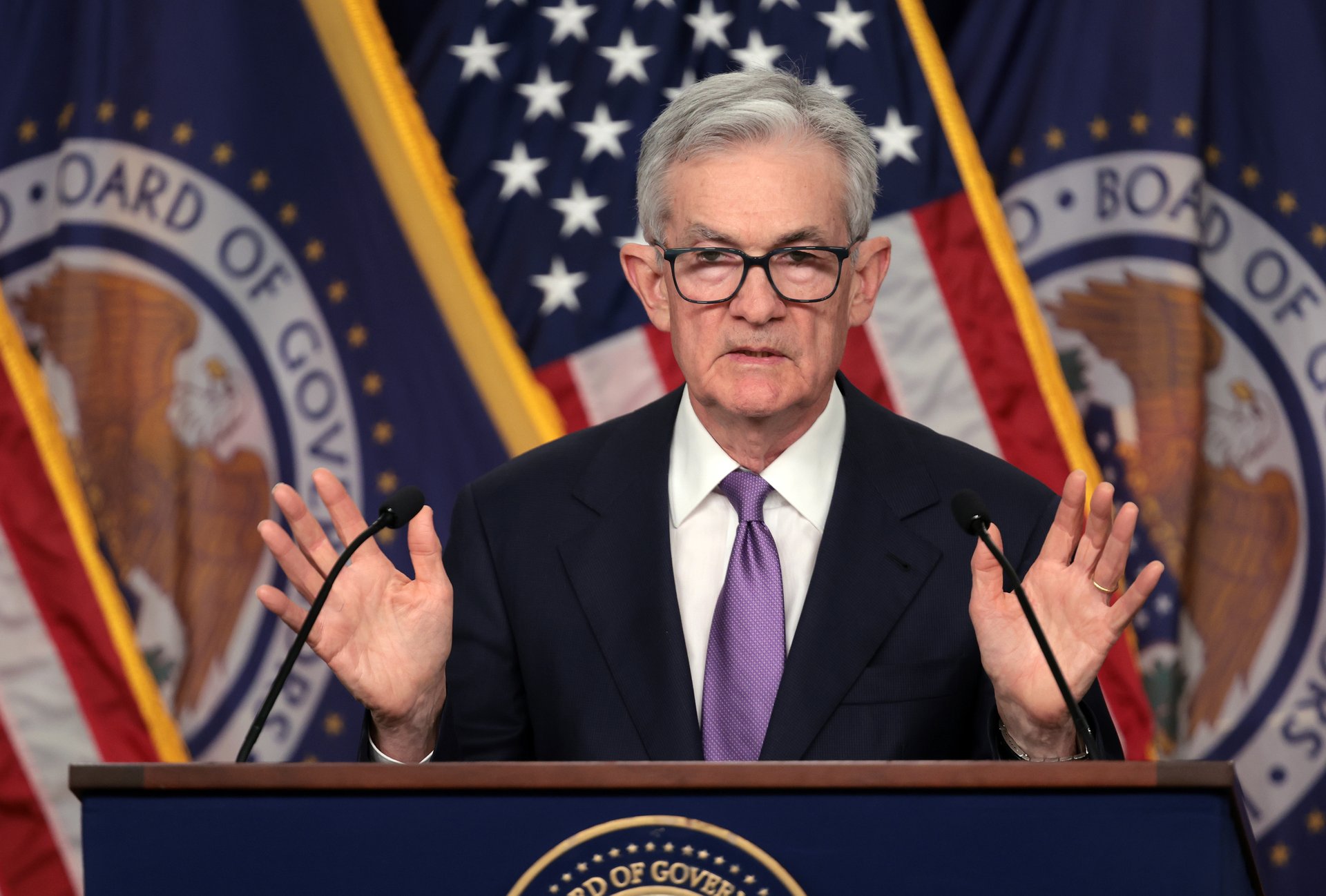🌎 Don’t expect a rate cut
Plus: The art of the (tax) deal.

Win McNamee/Getty Images
Good morning, Quartz readers!
Suggested Reading
Here’s what you need to know
A global mood swing. A survey from Bank America shows that investor sentiment is bouncing back to pre-Liberation-Day levels (but mostly overseas) and that recession fears are dropping.
Related Content
AI’d like a lawyer? OpenAI is reportedly considering whether to accuse Microsoft of anticompetitive behavior as the future of their partnership hangs in the balance.
Enlisting OpenAI’s bots. The Defense Department just awarded a one-year, $200 million defense contract to the ChatGPT-maker for “frontier AI capabilities.”
Prime cuts coming. Amazon CEO Andy Jassy said in a company-wide email that AI will bump up the company’s efficiency and productivity — but likely decrease its headcount.
A factory reset. Chipmaker Intel will reportedly lay off up to 20% of its factory workforce in what the CEO called “difficult actions but essential to meet our affordability challenges.”
Tesla gets Cyberstuck again. The company’s stock slumped on news that Cybertruck and Model Y production will be suspended at its Austin plant for a week — the third pause in the past year.
Hold, please
The Federal Reserve began its June meeting Tuesday with interest rates expected to stay exactly where they are: elevated and immovable. Markets are betting on a less-than-1% chance of a cut.
The (likely) decision to hold rates steady puts the Fed squarely at odds with President Donald Trump, who has made his position on monetary policy characteristically loud and clear — calling Fed Chair Jerome Powell a “FOOL,” among other insults. But Powell, a Trump appointee, isn’t budging. Inflation may be down from its peak, but it’s still above the Fed’s 2% target. The Fed worries that if it cuts rates too soon, it could trigger another inflationary spiral… just as Americans are unclenching their wallets.
Meanwhile, the economic mood board is decidedly mixed. GDP dipped in Q1 and might do so again in Q2, job growth is slow, and consumer confidence is recovering from its April slump — a.k.a. “Liberation Day,” when Trump announced his wave of tariffs — but remains shaky.
The president wants rate cuts now — to stimulate growth, boost markets, and take pressure off his economy. But Powell is playing the long game. He’s reluctant to repeat the Fed’s 2021 mistake, when it underestimated inflation’s staying power and moved too slowly to correct course. This time, he’s doing the opposite: refusing to move too quickly.
It’s a delicate position.
Powell risks damaging the labor market if rates stay high for too long. But he could risk something bigger — the Fed’s credibility — if he caves to political pressure. When Trump last floated the idea of firing Powell, the market dropped 1,000 points. Investors, it seems, prefer a Fed that acts like it is above politics, even if it means sitting on its hands through some turbulence. Quartz’s Catherine Baab has more on how the Fed is holding firm while markets are holding their breath.
Deductions, deductions, deductions
Senate Republicans just dropped their version of Trump’s sprawling tax-and-spending megabill — all 549 pages of it — setting off a phase of negotiations that could determine the size, shape, and shelf life of the next generation of GOP tax policy.
The proposal aims to extend Trump’s 2017 tax cuts and pay for them with steep reductions to safety net programs such as Medicaid and clean energy tax credits. The legislation leans into Trump’s campaign-season promises (No taxes on tips! Deductions for overtime! Bigger breaks for seniors!) — though most of those perks vanish in 2028, just as his term expires.
The Senate’s version includes stricter income phaseouts than the House-passed version and delegates enforcement details to the Treasury Department. Another key difference? Permanence. While the House bill took a short-term approach to tax extenders, Senate Republicans are aiming to make several key business breaks permanent, including immediate expensing of capital investments and full deductions for R&D.
In a departure from earlier GOP efforts, the Senate plan doesn’t entirely go scorched earth on Biden-era clean energy programs. Instead, the plan is giving solar, wind, nuclear, and geothermal projects more time before the plug is pulled — while quietly phasing out EV tax credits and adding protections to keep Chinese components out of clean-energy supply chains.
Negotiations with the House will be tense. The math is tight. The rhetoric will be looser. And if nothing else, this guarantees one thing: The next few weeks on Capitol Hill will be loud, long, and lousy with tax metaphors. Quartz’s Joseph Zeballos-Roig has more on how the tax bill became a policy Rorschach.
Our best wishes on a safe start to the day. Send any news, comments, and more to [email protected].